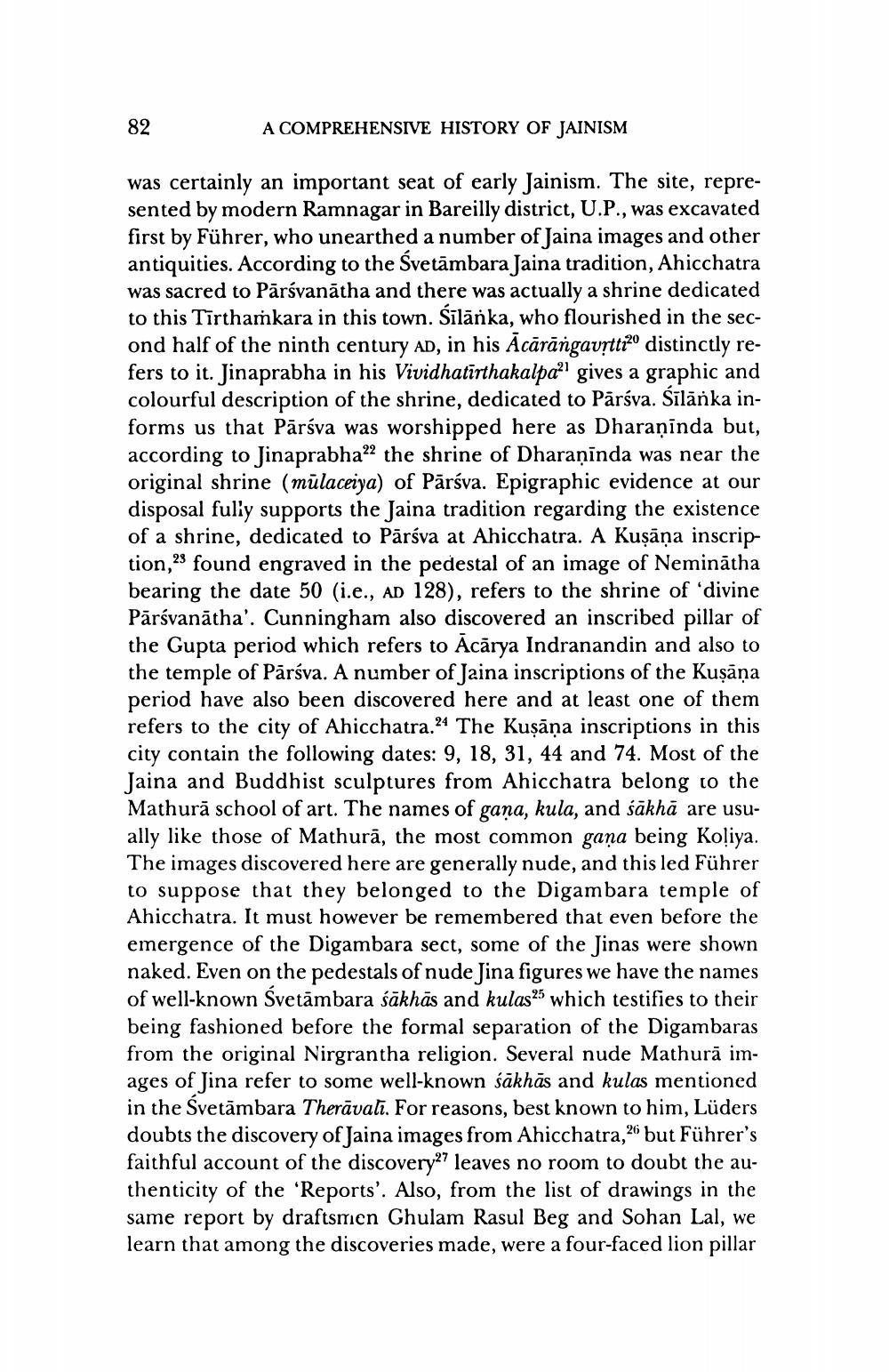________________
82
A COMPREHENSIVE HISTORY OF JAINISM
was certainly an important seat of early Jainism. The site, represented by modern Ramnagar in Bareilly district, U.P., was excavated first by Führer, who unearthed a number of Jaina images and other antiquities. According to the Svetāmbara Jaina tradition, Ahicchatra was sacred to Pārsvanātha and there was actually a shrine dedicated to this Tīrthaṁkara in this town. Sīlānka, who flourished in the second half of the ninth century AD, in his Acārāngavrtti2° distinctly refers to it. Jinaprabha in his Vividhatīrthakalpagives a graphic and colourful description of the shrine, dedicated to Pārsva. Šīlānka informs us that Pārsva was worshipped here as Dharaṇinda but, according to Jinaprabha22 the shrine of Dharaṇīnda was near the original shrine (mūlaceiya) of Pārsva. Epigraphic evidence at our disposal fully supports the Jaina tradition regarding the existence of a shrine, dedicated to Pārsva at Ahicchatra. A Kuşāņa inscription,29 found engraved in the pedestal of an image of Neminātha bearing the date 50 (i.e., AD 128), refers to the shrine of divine Pārsvanātha'. Cunningham also discovered an inscribed pillar of the Gupta period which refers to Acārya Indranandin and also to the temple of Pārsva. A number of Jaina inscriptions of the Kuşāņa period have also been discovered here and at least one of them refers to the city of Ahicchatra.24 The Kuşāņa inscriptions in this city contain the following dates: 9, 18, 31, 44 and 74. Most of the
and Buddhist sculptures from Ahicchatra belong to the Mathurā school of art. The names of gana, kula, and sākhă are usually like those of Mathurā, the most common gaņa being Koliya. The images discovered here are generally nude, and this led Führer to suppose that they belonged to the Digambara temple of Ahicchatra. It must however be remembered that even before the emergence of the Digambara sect, some of the Jinas were shown naked. Even on the pedestals of nude Jina figures we have the names of well-known Svetāmbara säkhās and kulas25 which testifies to their being fashioned before the formal separation of the Digambaras from the original Nirgrantha religion. Several nude Mathurā images of Jina refer to some well-known sākhās and kulas mentioned in the Svetāmbara Therāvalī. For reasons, best known to him, Lüders doubts the discovery of Jaina images from Ahicchatra,26 but Führer's faithful account of the discovery27 leaves no room to doubt the authenticity of the 'Reports'. Also, from the list of drawings in the same report by draftsmen Ghulam Rasul Beg and Sohan Lal, we learn that among the discoveries made, were a four-faced lion pillar




